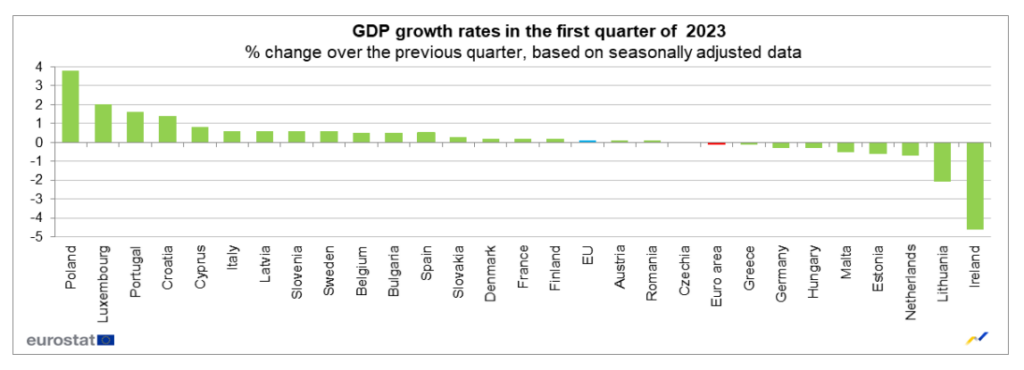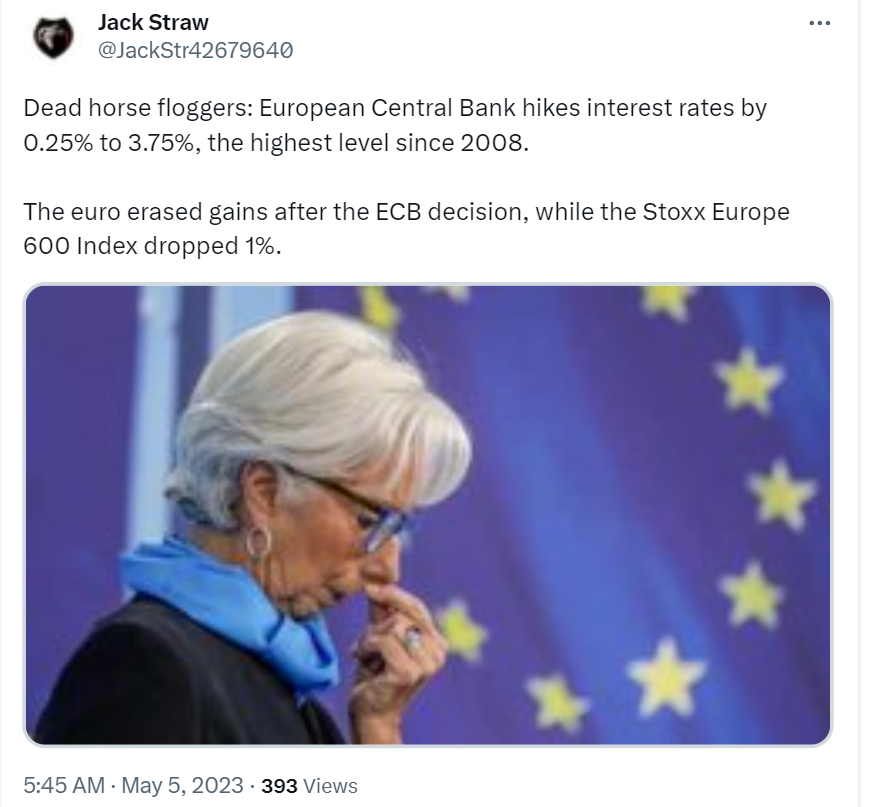The Eurozone Has Been in Recession Since 2023 Began, Eurostat Data Reveals
According to Eurostat, the EU’s statistics agency, the Eurozone is in recession. European Central Bank raised interest rate to 3.75%, highest since 2008. The post The Eurozone Has Been in Recession Since 2023 Began, Eurostat Data Reveals appeared first on CoinChapter.

Key Takeaways:
- The Eurozone, comprising 20 EU countries using the euro, has slipped into a recession.
- Data from Eurostat indicates the economic block has been in recession since the start of 2023.
- The European Central Bank (ECB) raised interest rates by 0.25% to 3.75%.

YEREVAN (CoinChapter.com) — The Eurozone is grappling with mounting economic challenges. Since the start of this year, the economic block has entered a recession, according to Eurostat, the EU’s statistics agency.
The Eurozone comprises 20 European Union (EU) member states that share the euro as their currency,
Recent data from the agency reveals a decline in the region’s economic output for two consecutive quarters. The development has raised concerns about the stability and resilience of the Eurozone’s financial health.
Preliminary figures indicate that the Eurozone’s gross domestic product (GDP) contracted by 0.1% during the first quarter of this year. This decline follows a contraction of 0.1% in the final quarter of 2022.

A recession is defined as two successive quarters of contraction.
With its two consecutive periods of economic contraction, the Eurozone has entered a period of economic hardships.
In contrast, employment continued to rise in the economic area. The report said it jumped from 0.3% in the previous quarter to 0.6% in Q1 this year.
“Based on seasonally adjusted figures, Eurostat estimates that in the first quarter of 2023, 216.1 million people were employed in the EU, of which 168.2 million were in the euro area,”
the report claims.
Also Read: US Scarily Behind European Union on Crypto Licensing Laws — Gary Gansler Roasted
Slow economic growth in the Eurozone
The economic slump in the Eurozone is a result of a combination of factors. These include sluggish global demand, supply chain disruptions, and persistent uncertainties from the ongoing COVID-19 pandemic.
The Russian invasion of Ukraine, which has already entered its second year, is also a major factor. The export-oriented economies of the Eurozone, which are heavily reliant on international trade, have been badly hit. Demand from key trading partners has waned, hampering their economic growth.
As a result, eight European Union (EU) member states experienced economic contractions during the year’s initial quarter. Ireland suffered the most significant decline among them. According to the data, its economy shrank by 4.6%, followed by Lithuania (-2.1%) and the Netherlands (-0.7%).
In contrast, some EU members registered positive economic growth. Poland (+3.8%) recorded the highest increase in GDP compared to the previous quarter, followed by Luxembourg (+2.0%) and Portugal (+1.6%).
The development comes just days after news broke that Germany had slipped into a recession. The GDP of the EU’s largest economy fell two quarters: by 0.5% in Q4/2022 and by 0.3% in Q1/2023.
Earlier this month, the European Central Bank (ECB) raised interest rates by 0.25% to 3.75%. This is the highest hike level since 2008.

In mid-May, the European Commission (EC) forecast that growth for 2023 would reach 1.1% across the Eurozone. However, with recent data from Eurostat indicating that the block has been in recession since the start of the year, it is unlikely that it could register such growth.
The block must revise its growth projects to a perhaps more plausible figure.
The coming months will be crucial in determining the Eurozone’s ability to overcome this technical recession and regain its economic footing. Can it? Time will tell.
The post The Eurozone Has Been in Recession Since 2023 Began, Eurostat Data Reveals appeared first on CoinChapter.







